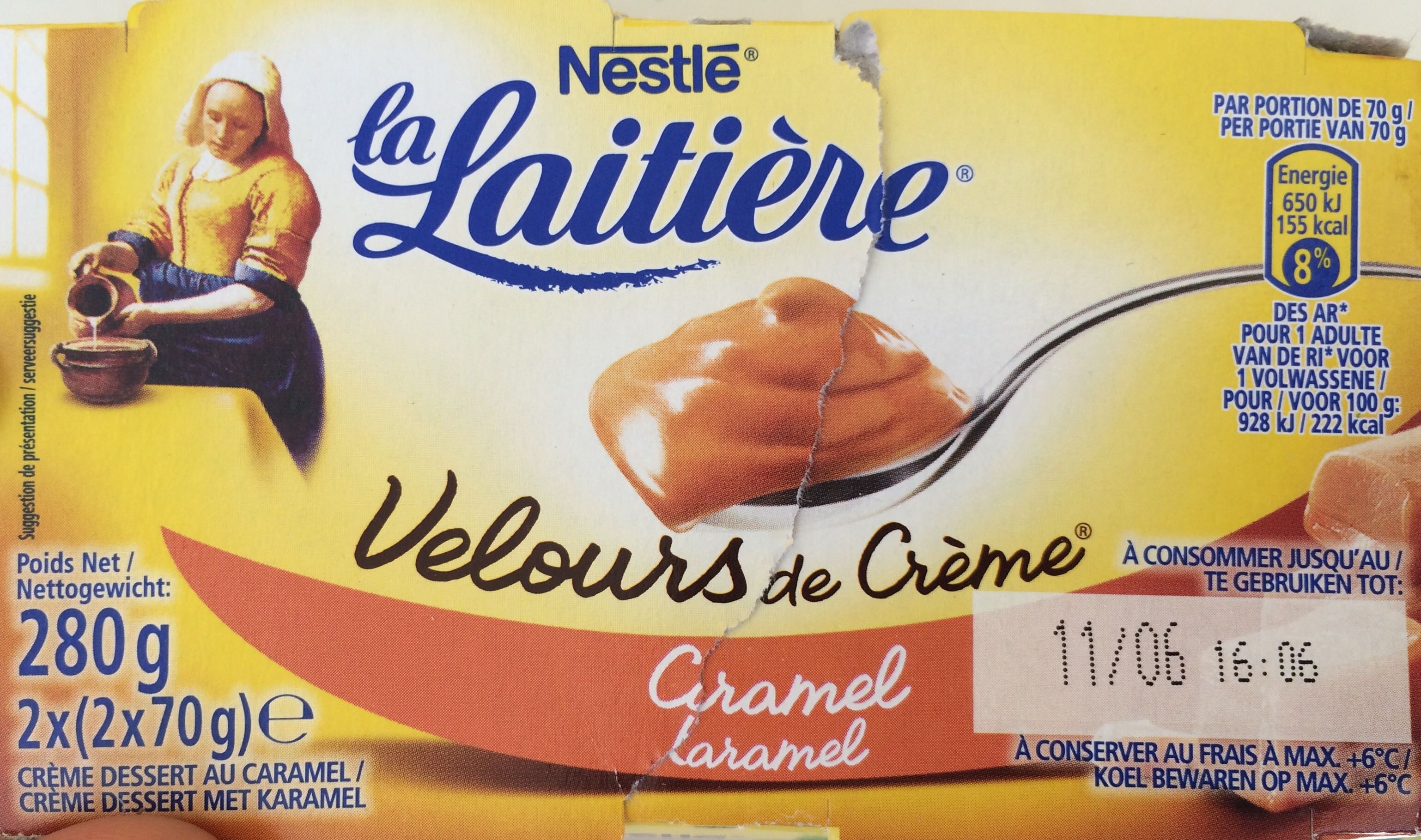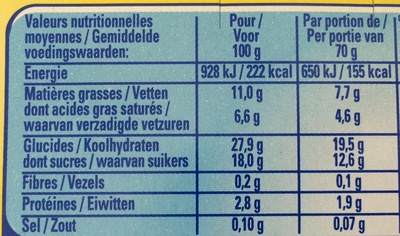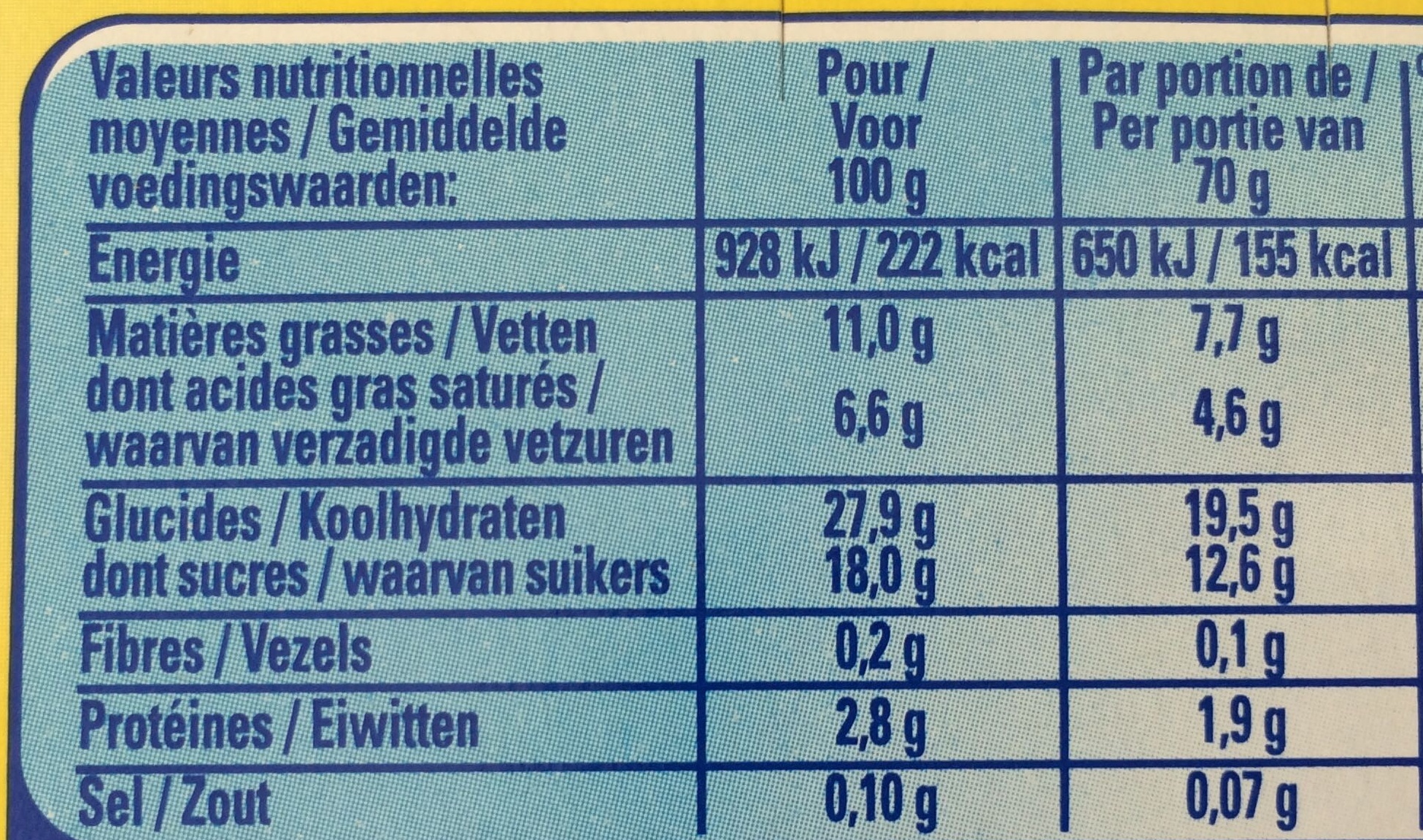Velours de Crème (Caramel) - Nestlé - 280 g [2 x (2 x 70 g)]
Important note: this product is no longer sold. The data is kept for reference only. This product does not appear in regular searches and is not taken into account for statistics.
This product page is not complete. You can help to complete it by editing it and adding more data from the photos we have, or by taking more photos using the app for Android or iPhone/iPad. Thank you!
×
Barcode: 3023290797501 (EAN / EAN-13)
Common name: Crème dessert au caramel
Quantity: 280 g [2 x (2 x 70 g)]
Packaging: Pot, Fresh, fr:Etui carton à recycler, fr:Pot plastique et opercule à jeter
Brands: Nestlé, La Laitière
Categories: Dairies, Desserts, Dairy desserts, Fresh foods, Creamy puddings, Caramel creamy puddings, fr:Desserts lactés au caramel
Labels, certifications, awards:
Green Dot, fr:Eco-Emballages, fr:Info-Tri Point Vert, fr:Nutritional Compass®
Origin of ingredients: France, fr:44350 Guérande, fr:Loire-Atlantique, fr:Pays de la Loire, fr:Sel de Guérande
Manufacturing or processing places: Lactalis Nestlé Ultra-Frais Bayeux - LNUF Bayeux (Filiale Groupe Lactalis) - Rue Jean Mermoz - ZAC des Longchamps - 14400 Saint-Martin-des-Entrées, Calvados, Basse-Normandie, France
Traceability code: FR 14.630.010 CE - Saint-Martin-des-Entrées (Calvados, France)
Link to the product page on the official site of the producer: http://www.enviedebienmanger.fr/des-marq...
Countries where sold: France
Matching with your preferences
Environment
Packaging
Transportation
Report a problem
Data sources
Product added on by openfoodfacts-contributors
Last edit of product page on by packbot.
Product page also edited by date-limite-app, jacob80, raphael0202, tacite.











